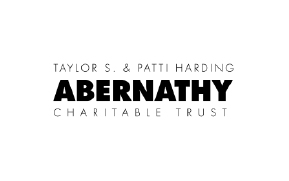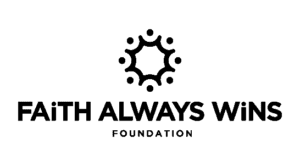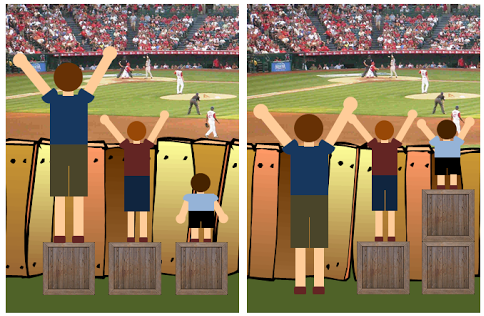“Racial equity refers to what a genuinely non-racist society would look like.
In a racially equitable society, the distribution of society’s benefits and burdens would not be skewed by race. In other words, racial equity would be a reality in which a person is no more or less likely to experience society’s benefits or burdens just because of the color of their skin. This is in contrast to the current state of affairs in which a person of color is more likely to live in poverty, be imprisoned, drop out of high school, be unemployed and experience poor health outcomes like diabetes, heart disease, depression and other potentially fatal diseases. Racial equity holds society to a higher standard. It demands that we pay attention not just to individual-level discrimination, but to overall social outcomes.” (
source) A classic meme by Craig Froehle illustrates the difference between “equity” and “equality”:
“A new study conducted by researchers at Stanford, Harvard and the Census Bureau, finds that in 99 percent of neighborhoods in the United States, black boys earn less in adulthood than white boys who come from similar socioeconomic backgrounds. This undermines the widely-held belief that class, not race, is the most fundamental predictor of economic outcomes for children in the U.S.” (
source) “The researchers found that the racial wealth gap applies even to the country’s wealthiest families: Black children whose parents were in the top 1 percent of earners, with incomes at an average of $1.1 million, grew up to have incomes 12.4 percent lower than white children who grew up in households with similar incomes.” (
source) “The research has shown that where children live matters deeply in whether they prosper as adults. On Monday the Census Bureau, in collaboration with researchers at Harvard and Brown, published nationwide data that will make it possible to pinpoint — down to the census tract, a level relevant to individual families — where children of all backgrounds have the best shot at getting ahead.” (
source) ———-
Incomes of adults who, as children, lived in these areas around Kansas City (source) 
———-
Income levels around Kansas City (source) 
———-

“Racial health disparities are associated with substantial annual economic losses nationally, including an estimated $35 billion in excess health care expenditures, $10 billion in illness-related lost productivity, and nearly $200 billion in premature deaths. Concerted efforts to reduce health disparities could thus have immense economic and social value.” (
source) “There are sharp disparities in health outcomes with vulnerable populations often having significantly poorer health outcomes than the population as a whole. … Years of Potential Life Lost [YPLL] shows this geographic disparity. Rural communities and urban communities often have YPLLs double that of adjacent suburban communities. … Urban counties have the greatest concentration of people of color and low-income residents while rural counties have greater concentrations of the elderly and poor access to health providers.” (
source)
Life expectancy in KCMO by zip code (source) 
———–
Life expectancy around KCMO (source) 
———-
Health / Access to Health Services (source) In Kansas City, MO  In Kansas City, KS
In Kansas City, KS 
“Let’s say that a school system’s goal is for all middle school children to attain proficiency to conduct online research for their classes. This school system’s baseline is that some middle schools have a stronger IT infrastructure than others…It happens that…the IT infrastructure is least robust in those schools that disproportionately serve students of color.” “Now let’s say that the school system receives a grant to improve middle school IT infrastructures. … Should this grant be distributed on the basis of equality or equity?. … If you opt for equal funding per school, racial gaps will remain, and you will not address existing racial inequities. If you opt for equitable funding, the outcome is that students in School B above now have the opportunity to perform along the lines of students in School A, which they would not have had if you had distributed funding equally.” (
source)
Educational Attainment in Kansas City (source) 
























 ———- Income levels around Kansas City (
———- Income levels around Kansas City ( ———-
———- 
 ———– Life expectancy around KCMO (
———– Life expectancy around KCMO ( ———- Health / Access to Health Services (
———- Health / Access to Health Services ( In Kansas City, KS
In Kansas City, KS 
